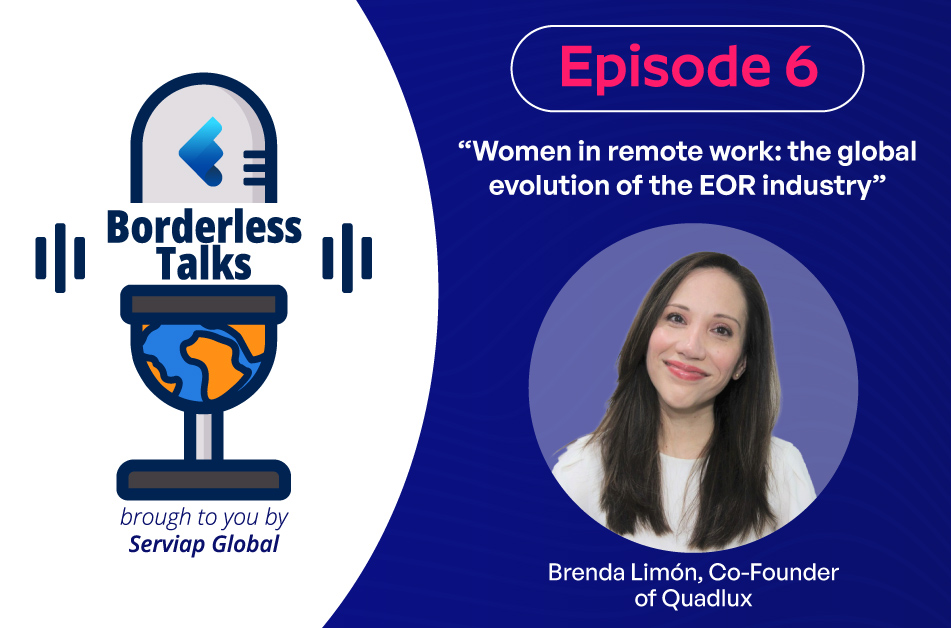Table of Contents
For any company interested in hiring international talent but unsure how to go about it, numerous recruitment models are available, with each offering advantages and drawbacks.
A recruitment model is a strategy for finding and hiring team members, which will often involve working with a third party provider.
SEE ALSO: Call center outsourcing: 5 great destinations to consider
When considering the many paths available for recruiting international professionals, including hiring directly and working with an employer of record (EOR). The best choice will be based on a range of factors, including the length and scale of the project for which people are being hired and the roles that need to be filled.
Contact us if you need support with rapid, compliant international recruitment.
Recruitment models: characteristics, advantages and challenges
Recruitment models have evolved in recent years, with the emergence of new hiring solutions, and the COVID-19 pandemic changing how many companies approach sourcing talent, especially in the context of their increased uptake of remote work.
Because not being limited by physical location offers access to a much broader pool of talent, with many highly-skilled professionals available at competitive rates. This has given companies the opportunity to consider new recruitment models offering quick and easy international hiring.
Businesses that need to add new talent to their pools can use any of the three standard recruiting models: internal, RPO, and embedded. However, they must also be aware of new staffing strategies known as hybrid or tailored models and choose the one that works best for them.


1) Internal recruitment
In this recruitment model, companies have an in-house team, usually part of the human resources department, that is responsible for talent acquisition. These in-house recruiters work wiuth other departments to find and onboard new team members, generally condusting initial interviews in order to pass a vetted list of canidates to the hiring manager.
This team is also responsible for the administrative tasks involved in talent acquisition, like the legalities associated with hiring, onboarding, and training new employees, workforce development, cross-departmental collaboration and communication, risk management, and more.
Advantages: In-house recruiters know the organizational culture and current team members well and will likely have experience of filling the types of roles that the company needs.
Challenges: In-house recruitment requires a range of support staff to administer professionals who are hired. It can also be subject to ebbs and flows, depending on the scale of the company.
2) Recruitment process outsourcing (RPO)
The second on the list of recruitment models is RPO, in which companies rely on a third party, such as an employer of record (EOR), for some or all of the talent acquisition processes.
These provders can simply provide recruitment services to source direct hires, or can serve as the local legal employer for overseas professionals, managin their payroll in the process.
Advantages: RPO offers a rapid and convenient option for hiring internationally, with the provider having an established recruitment network and expert understanding of the local job market. RPO can also offer significant cost-savings, while relieving the hiring company of a significant proportion of compliance risk.
Challenges: In many cases RPO is chosen for hiring people to work remotely, meaning that you will need to deal with common challenges of managing remote teams.
3) Embedded recruitment
In this recruitment strategy, a company’s internal recruitment team is bolstered by the addition of external recruiters.
Often embedded recruitment will be chosen not only to add capacity to the recruitment team, but also as a form of consultancy by which the provider also offers guidance on improving internal processes.
Advantages: Embedded recruitment offers the key advantage of boosting recruitment capacity on a medium-term basis, as well as providing the company with access to advice from seasoned professionals who can help improve internal processes.
Challenges: embedded recruitment is often more a medium-term choice than short-term, especially when it involves consultancy on processes. It therefore often requires a significant committment in terms of time and resources.
Other recruitment models
Beyond those three recruitment models, some other hybrid models have grown in popularity in recent years. They include:


On-demand recruitment
Under this hybrid recruitment model, firms acquire the services of an on-demand provider, either to work on an hourly or project-specific basis, as if they were international independent contractors.
The on-demand recruitment model is similar to RPO, but much more limited in scale. The external recruiter is only brought in to hire for a specific limited number of roles.
Contingency recruitment
When companies opt for the contingency recruitment model, they rely on one or more agencies to search for the right candidate to fill a vacancy. These providers are only paid if candidates they source are hired, so they have considerable incentive to find the right person.
One of the drawbacks of such a model is the fact that the providers must invest resources into processes without the guarantee of success, which can lead to breakdowns in the relationship if the candidates a provider offers are consistently overlooked.
Retained recruitment
Among recruitment models, retained recruitment is similar to working with an EOR, with providers retained as the sole recruitment partner for a given vacancy or project. The provider will usually receive an advance fee to cover the cost of the search for potential candidates.
This model obviously demands a level of committment from the hiring company, because they are required to invest in the process in advance and are effectively committed to the provider until the needed roles included in the services agreement have been filled.
Tips to improve your recruitment process and get the best talent
Whichever of these recruitment models is most suitable for you, the following tips should be useful:


Implement intelligent systems: An applicant tracking system (ATS) is an innovative tool that helps internal, external, or combined recruiters streamline their selection processes. The software saves time, reduces costs, and detects the most complete profiles.
Take advantage of AI: AI recruiting tools simpliofy searching for and hiring the best talent, making them a great help in any recruitment model. These tools focus on the skills and capabilities of the applicants, avoiding any unconscious human bias related to aspects such as gender, age, or origin.
Create attractive job descriptions: attractive but honest job offers in the proper recruitment channels help companies find the best talent quickly. These should include key aspects such as the skills and knowledge that the applicant should have, the activities to be performed, the location of the offices or if it is a remote position, the salary range, and the benefits offered by the organization.
Improve your business image on social media: a good image on social networks is essential for any business, especially those with limited resources and seeking to attract top talent. Platforms such as LinkedIn for professional networking and even social media such as Instagram, TikTok, or Facebook are of great help in any of the recruitment models mentioned.
Offer good benefits and rewards: to improve recruitment models and retain the best talent, offering attractive salaries but also benefits and rewards is necessary. Some of the most popular among workers today are paid time off, ongoing training, discounts at gyms or sports clubs, and grocery and gas vouchers.
Trust in the services of an EOR: an employer of record (EOR) facilitates recruitment and reduces clients’ expenses since it has established entities and recruitment networks worldwide. In addition, it is familiar with local regulations, thus minimizing any risk related to talent acquisition. It also takes care of companies’ human resources, from payroll administration to the eventual departure of employees.
Serviap Global offers international recruitment services
At Serviap Global, we support companies with different recruitment models, including EOR services, contractor hiring, and global talent acquisition for sourcing direct hires.
We started in Mexico in 2010 before expanding internationally. Today we are recognized for our unrivaled understanding of Latin America and our expertise on hiring in emerging markets.
Contact us to find out more about how we can assist you.






























